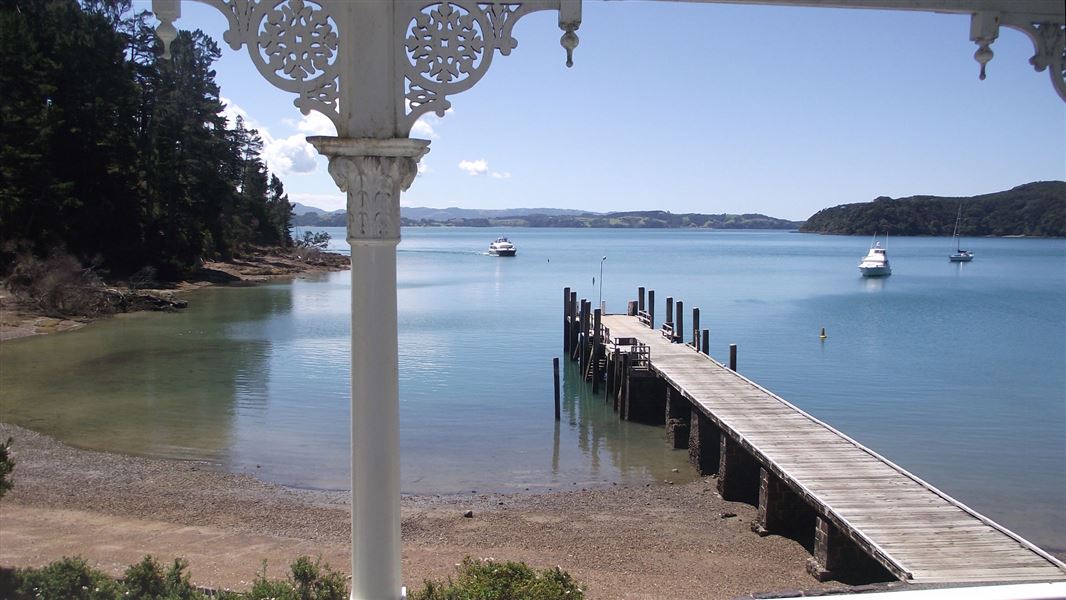Kawau is home to the iconic Mansion House. Surrounding the house and extending up the valley are exotic gardens established by Sir George Grey.
Kawau Island is also the site of one of New Zealand's earliest mining ventures. Remnants of the copper mining industry remain and can be explored using the network of tracks through the Kawau Island Historic Reserve.
The Kawau Island Historic Reserve was created to protect Mansion House and gardens, together with sites and relics from the historic copper industry.
Today about 10% of the island is protected as publicly owned reserves managed by the Department of Conservation. The remainder of the island is privately owned with a small resident population.
Māori history
Kawau is associated with the early ancestor Toi-te-huatahi from whom comes the island’s traditional name ‘Te Kawau Tumaro o Toi’. The island is reputed to have been settled by descendants of Toi and later by descendants of the crews of the Arawa and Tainui waka.
For three centuries the island was occupied by the people known as Ngāti Tai who were later defeated by the Te Kawerau iwi, specifically Ngāti Manuhiri.
During the 18th century there was continuing conflict between the resident Kawerau and the Marutūahu confederation of tribes from the Hauraki area over access to the shark fishing grounds.
Kawau was later abandoned after the musket war raids in the 1820s by Ngāpuhi, and remained unoccupied until the 1830s. In this period the Ngāti Manuhiri hapu of Te Kawerau and Ngātiwai returned to the island and the adjoining coastline where they remain to this day.
After protracted debate over ownership Kawau was sold in the 1840s to W.T. Fairburn of the North British Australasian Loan and Investment Company.
Historic copper industry
Copper was discovered by accident. The original mining operations were to extract manganese. Copper was mined from 1844 until June 1852 when the mines were inundated.
There were up to 300 people living on the island during this period. Mining villages were located at Mansion House Bay, Two House Bay, Sunny Bay, Schoolhouse Bay, Dispute Cove and Miners Bay.
The copper ore eventually became difficult to extract, because most of the mine workings were below sea level and had to be constantly pumped free of water.
Problems were also encountered shipping the ore to the Northern Hemisphere. In 1849 a smelting works was built to partially process the ore on the island. A rival smelting operation was built on Motuketekete Island.
Eventually flooding and competition between two companies working the same ore body led to closure of the mine in 1852. There were further attempts to reopen the mine in 1854-55 and 1900-02, but it is likely that little copper ore remains.
Coppermine engine house and smelting house
The ruins of a sandstone building built to house the steam engine and pump which kept the mine free of water is one of the more visible relics of the copper industry. Built in 1854 during an attempt to de-water the mines, it is very similar to engine houses found in Cornwall, the home of many of the Kawau miners. The enginehouse is located beside the mine workings at Mine Point.
Another ruin which can be visited or viewed by boat is the old smelting house in the Smelting House Historic Reserve, on the north side of Bon Accord Harbour. A busy industrial complex and village which once stood on this site is now marked only by the sandstone walls of the smelting house building.
